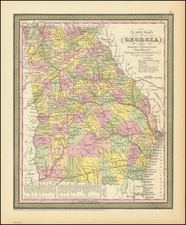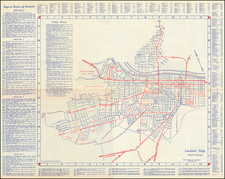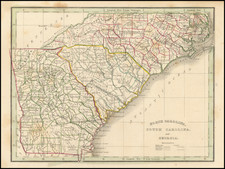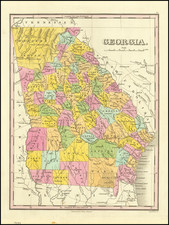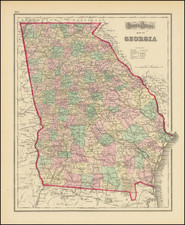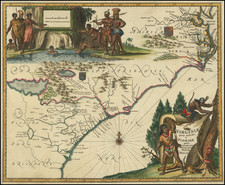Elegantly antique engraved map of Georgia, produced by Joseph Meyer in Hildburghausen in 1845.
Issued from the Hildburghausen-based geographical engraving establishment of Joseph Meyer in 1845, the map "Neueste Karte von Georgia mit seinen Strassen, Eisenbahnen und Entfernungen" stands as a historical artifact of notable significance, detailing the state of Georgia with elegance and precision during a period of substantial German immigration to the United States.
This map holds particular historical relevance given the sociopolitical context of its creation. The mid-19th century witnessed a substantial increase in German immigration to America, making this map a likely resource for those seeking to acquaint themselves with the new land. As such, it bears the distinction of being one of the few detailed maps of Georgia published in Germany and readily available to prospective German emigrants during this period.
Depicting the counties, towns, roads, canals, and lakes, the map offers a comprehensive geographic overview of Georgia. Beyond mere cartographic representation, the map also provides invaluable insights into the infrastructure and urbanization processes of the time, highlighting key transportation channels such as roads and railways, as well as the extent of navigable waterways.
A fascinating feature of this map is the indication of distances between places, presented in English miles, with markers for quarter miles, reflecting the meticulous attention to detail that characterizes Meyer's work. The map thus serves as a valuable historical document, illuminating the state of geographic knowledge and cartographic precision during a period of significant transatlantic migration.
Joseph Meyer (1796-1856) was a German publisher who released Meyers Konversations-Lexikon, a German-language encyclopedia in print from 1839 to 1984. Meyer was born in Gotha and educated as a merchant in Frankfurt, an important city in the book trade. He traveled in London in 1816 and was back in German in 1820, where he began to invest in textiles and railways. He opened his publishing operation, Bibliographisches Institut, in 1826. His publications each had a serial number, a new innovation at the time. He was best known for his atlases and the Meyers Universum (1833-1861), which featured steel-engravings of the world. The Universum stretched to 17 volumes in 12 languages and was subscribed to by 80,000 people all over Europe. Thanks to his publishing success, Meyer moved the Institut from Gotha to Hildburghausen in 1828. Meyer died in the latter city in 1856.









